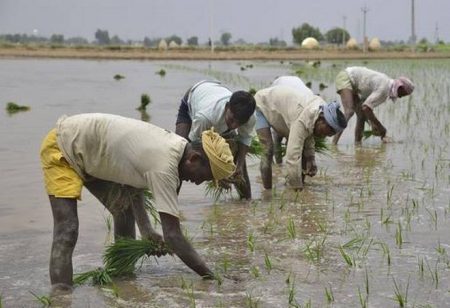Haryana’s crop diversification scheme 28/05/2019 – Posted in: Daily News – Tags: agriculture, crop, water depletion
HARYANA’S CROP DIVERSIFICATION SCHEME
For: Preliminary & Mains
Topic covers: Scheme, significance, advantages, Urgent need
News Flash
Haryana government has decided to discourage rice sowing from the upcoming season, which threatens to deplete the State’s groundwater.
Farmers have asked the government to first come out with a mechanism to procure alternative crops at the Minimum Support Price (MSP) so that farmers are not at the receiving end.
Why this move needed?
Because of Groundwater crisis. Water depletion in Haryana over the years has led to 60 dark zones in the State, which include 21 critical ones in 10 districts.
By diversifying the area of non-basmati paddy into maize under this scheme, the total saving of water is expected to be 0.71 crore cm (1 cm = 1 lakh litres of water).
Issues/ Challenges
- If the government wants farmers to give up rice and cultivate some other crop then there needs to be a mechanism to purchase the alternative crop at MSP.
- The State government should enact a law, which guarantees that the produce of farmer is purchased at MSP.
- Farmers will only leave rice cultivation if they are sure of reaping more profit with the alternative crop (maize and tuar).
Pilot Project
- 27th May was first day for registration for Haryana government’s ambitious scheme for crop diversification to check on the depleting water table.
- As many as 3491 Haryana farmers decided to shift to alternative crops, mainly maize, from paddy cultivation covering more than 1600 hectare land.
- The state government had recently announced to shift 50,000 hectares to maize, arhar (pulses) and oilseeds from paddy as part of a pilot project in seven blocks of the state.
- The government had also announced giving an incentive of about Rs 10,000 per hectare to the farmers.
Benefits
- Maize is the ultimate solution to replace paddy as it has various strengths such as many fold water saving, increase wheat yield, suitable for conservation and less chemical input needed.
- If maize and arhar are sown instead of paddy, it is expected that 10 per cent more wheat would be produced because maize gets matured in 90 to 100 days and fields are empty by October 10. Therefore, there will be enough time for sowing wheat whereas the paddy crop takes 130 to 140 days to mature and fields are empty in November.
- Growing baby corn and quick maturing vegetables will not only fulfill the daily requirements of the people, but it would also generate employment opportunities to local youth.
- Under the new scheme, identified farmers will be provided seed free of cost and given a financial assistance for ₹2000 per acre in two parts.
- The maize crop insurance premium of ₹766 per hectare will also be borne by the government. Also, maize produce will be procured by government agencies at MSP.
- Seeds of ‘tuar’ will also be provided free of cost to farmers and incentives will also be provided on a similar pattern.
Source: Indian Express
You can follow us on LinkedIn and for more updates related to UPSC IAS Preparation, Like our Facebook Page and subscribe our Diligent IAS Youtube Channel
Also Read Related Daily News

